This high-intensity routine includes 12 classic exercise moves
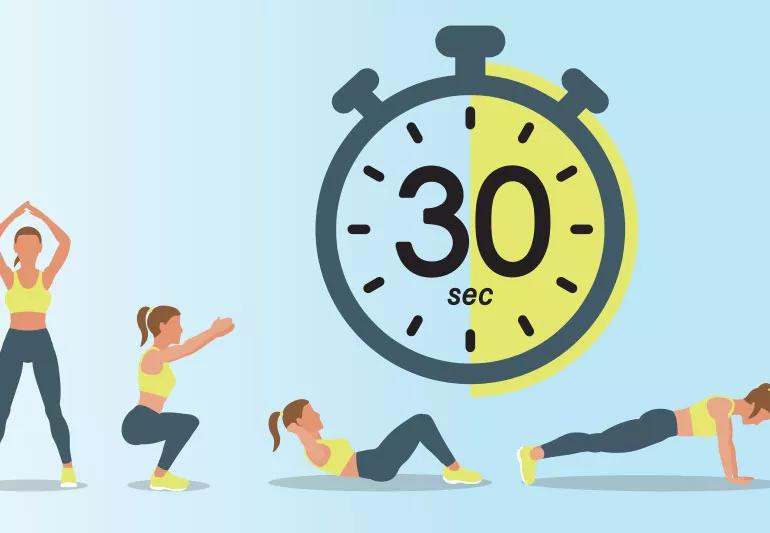
It’s not always easy to figure out how to start exercising. What moves should you do, and for how long? Do you need a bunch of fancy equipment to get started? Is this even working?!
Advertisement
Cleveland Clinic is a non-profit academic medical center. Advertising on our site helps support our mission. We do not endorse non-Cleveland Clinic products or services. Policy
The seven-minute workout is an exercise routine popularized on TikTok. The only equipment you need is a wall and maybe a chair, making it a great workout for beginners and for anyone who’s on the go and away from their typical gym setup.
“There really are no excuses not to do this one,” says exercise physiologist Katie Lawton, MEd. She explains what the seven-minute workout is, what exercises it entails and how you can modify it to your ability.
The seven-minute workout is a high-intensity routine that includes 12 basic exercise moves. You perform each move for 30 seconds, then you rest for 10 seconds in between as you prepare for the next one.
“Within each 30-second timeframe, you want to try to do as many repetitions or push yourself as hard as you can,” Lawton says. “All of the exercises are modifiable to fit where you’re at fitness-wise.”
There’s one catch: The seven-minute workout isn’t actually seven minutes long. You’re actually supposed to repeat it two to three times, which would make the whole workout 14 or 21 minutes, respectively. But if you’re brand new to exercising or only have a little bit of time to spare, one seven-minute circuit make for a great “exercise snack.”
Advertisement
Though this workout includes 12 exercises, it’s important that you do them in the order they’re listed in.
“They’re mixed up a bit between the muscle groups so you’re not going back-to-back with any of your movements,” Lawton clarifies. This helps ensure that you’re not overworking any muscle group (like your lower body, upper body and core).
In order, the exercises are:
Let’s go deeper into what each exercise entails, plus options for modifications.
Jumping jacks are a great whole-body warmup.
The idea is to make an X shape with your body. Start in an upright position, with your feet together and your arms at your sides. Then, simultaneously jump and spread your feet apart while raising your arms above your head — that’s the X move. Repeat this move for 30 seconds, getting in as many jumping jacks as possible.
“If jumping bothers your knees or ankles, you can modify the movement a little bit,” Lawton advises. “Step your foot out to each side as you’re bringing your arms above you.”
The only piece of equipment needed for wall-sits is (you guessed it!) a wall. This one is pretty self-explanatory.
“Lean your back into the wall, with feet about a foot or foot and a half away from it,” Lawton explains. “Then, you’re going to slide your back down the wall so that you look like you’re sitting on a chair.”
In a full wall-sit, your knees and hips should be at a 90-degree angle. But if you need to modify this move, just don’t sit down quit as deeply.
“This is a very good exercise for your core and your quads,” Lawton says. “When the 30 seconds are up, just slide back up the wall and take your 10-second break.”
To do a classic pushup, assume a plank position on your hands and toes.
“As you slowly lower yourself to the ground, you want to try to keep your elbows, military-style,” Lawton instructs. “Then push, use your chest muscles to push yourself back into a plank position again.”
Need to modify your pushups? No problem. Try them on your knees instead of your toes, or you could perform the move against a countertop, a weight bench or even a wall, depending on your ability.
“There are also ways to make that exercise harder,” Lawton says. “You can use a bench to do a decline pushup or use dumbbells to go deeper into what we call deficit push-ups.”
Whatever you choose, make sure that you focus on quality over quantity. It’s better to do a few deep pushups than a bunch of shallow, mini-pushups where you’re basically just moving your elbows back and forth.
Advertisement
There are a few variations on crunches, depending on what feels best to you. “You can bend your knees or put your feet flat on the ground, and you can put your hands behind your head or cross your arms across your chest,” Lawton says.
Whatever you do, focus on using your core to bring your chest up toward the ceiling — without craning your neck.
“Keep looking at the ceiling the whole time so that you don’t hurt your neck,” Lawton advises. “If you feel it in your neck, you’re probably not using your abdominal muscles to do the crunching movement.”
For this one, you’ll need a step, a curb or a sturdy chair, bench or stool.
“For this one, all you do is step up and then step back down,” Lawton says. “This is both a cardio movement and a leg exercise.”
Alternate your starting leg so that you don’t use one leg more than the other or create any sort of imbalance.
Ready to practice your hip and ankle flexibility? It’s time to get your squat on.
Start in a standing position with your feet shoulder-width apart, toes pointing outward or straight ahead. To do a squat, bend your knees and push your hips back, sort of like you’re sitting on an invisible chair.
“Sit your butt back, then lower yourself down toward the ground,” Lawton says. Lower your body as much as you’re able, making sure your knees stay aligned over your ankles. Use your core to maintain good posture, too.
Advertisement
“Sometimes, I have people put a chair behind to make sure they’re sitting back and not using their quadriceps too much,” she adds. “You can also hold onto a suspension trainer (like a TRX®) or a door frame to make sure you’re sitting back.”
For this one, you’ll need a chair behind you. Place your hands on it, either with your hands turned outward or with your fingertips facing your body.
Extend your heels in front of you, then lower your butt toward the ground, keeping your back straight and your shoulders down (rather than squished up toward your ears). Push yourself back up by using your triceps strength and extending your elbows.
“The placement of your feet will determine how challenging this move is for you,” Lawton says. “You can also elevate your feet to make it even more challenging.”
A plank is sort of like a pushup … but without the pushing up. If you’re new to planks, start with your knees and forearms on the ground; if you’re more experienced, you may want to stay on your toes.
Whichever you choose, keep your body straight and your core and glutes tight while you hold the position for 30 seconds. Whatever you do, keep your body straight and your core and glutes tight while holding the position for 30 seconds.
Advertisement
“No sagging, no butt in the air,” Lawton encourages. “Squeeze your glutes and your posterior a little bit, and use your abdominal muscles, as well.”
For this exercise, think about marching in place — lifting your knees as high as you can to engage your core and work your hip flexors.
“You can put your hands out in front of you and make it your goal to drive your knee up as high as your hands,” Lawton says.
Depending on your ability, you can do it slowly or at a faster pace. If you feel like you’re doing an awkward jog, you’re probably doing it right!
This lower-body exercise targets your quads, hamstrings, glutes and calves.
Start in a standing position with your feet hip-width apart. Then, step forward with one leg, bending both knees toward a 90-degree angle. Your front knee should be above your ankle, with your back knee hovering above the ground.
“You want a good width within your step, or else you’ll feel off-balance,” Lawton says. “And each foot should be in its own ‘lane.’ If your feet are right in front of each other, you’ll feel like you’re walking a tightrope, which makes it very hard to do the exercise.”
Once you’ve dropped down your back knee, move back into a standing position, and do the same thing with the other leg.
“Depending on how much space you have, you can do a walking lunge, making it a more continuous motion,” she says.
You’ve already done regular pushups, but now you return to that format with a bit of a twist — literally. For these, your stance should be a little bit wider than for plain old pushups, making it easier for you to engage your core muscles.
“You’ll first do your pushup, but then, you’ll take one hand and reach behind you toward that ceiling,” Lawton explains. “You can either do a pushup in between each side or do a pushup and then rotate to each side.”
Like regular pushups, you can modify these exercises if they feel too difficult for you. Go down to your knees instead of your toes, or do your pushups against a counter or wall instead of the floor.
Side planks are exactly what they sound like — planking, but on either side of your body. Roll to one side and prop yourself up on your forearm, bringing your hips up off of the ground.
“You want to try to keep your feet and your upper body all in a line,” Lawton notes. Need some assistance? Leave your knees on the floor. Want to make it more challenging? Prop up on one hand instead of your forearm.
Plank for 15 seconds per side. Whew! Once you’re done, you can either call it a day or take a one- to two-minute break and start the whole exercise cycle over again, depending on how long you want your workout to be.
Whether you do it for seven, 14 or 21 minutes, this 12-exercise routine is sure to raise your heart rate and likely make you sweat.
Its overall effectiveness depends on your fitness level and experience and how hard you push yourself. If you’re an experienced exerciser, the seven-minute workout isn’t going to change your life or get you to your high-level fitness goals.
“It’s not going to replace your other fitness routines,” Lawton adds, “but it can be a good filler workout, like between gym days or when you’re traveling.”
And for exercise newbies, the seven-minute workout can be a great beginner choice for a variety of reasons.
“When it comes to exercise, anything is better than doing nothing, even if it’s just seven minutes,” she says.
Here are some of the benefits of this quick workout:
“If you’re just getting started, the seven-minute workout can bring a lot of cardiovascular and strength benefits,” Lawton says. This cardio routine raises your heart rate (which is a good thing), and physical activity is one of the best ways to help prevent heart disease.
But if you have preexisting heart issues, just be sure to check with your healthcare provider to make sure exercise is safe for you.
“People who have cardiovascular disease or any type of heart concern should have a stress test done before starting any new exercise routine,” Lawton advises. “You want to be sure your heart is working properly at higher heart rate zones.”
There’s no need to invest in high-end workout clothes, expensive fitness classes or other fancy gear. With almost no props necessary, the seven-minute workout can be done just about anywhere — without spending a dime.
Tethered to your house because you have small kids? Want to get in a quick midday workout but don’t have time to run to the gym? Seven-minute workout to the rescue. This workout can also help you stay on track when you’re far from home.
“If you’re traveling and don’t have access to equipment, this routine helps you get in a decent workout no matter where you are,” Lawton says.
Count your repetitions during each exercise and keep track of them in a little logbook or in your phone. “The next time you come back to it, you can see how many repetitions you did before and then try to beat that numbers,” Lawton suggests.
All of the exercises in the seven-minute workout are modifiable to your skill level, and because it’s a solo workout, you’re in total control.
“Don’t feel like you have to go for the whole 30 seconds if you’re really struggling,” Lawton says, “or you can do a 20-second rest period between each exercise if you need a little more time to catch your breath.”
This workout is the same every time, which can help exercise newbies get the hang of things. But it’s important to stick to a schedule — and to not force yourself to go harder than your body is able.
“I always harp on consistency,” Lawton says. “If you’re a regular exerciser, this workout is OK to do every day. But if you’re just starting out, give yourself a rest in between, with some days of walking or another type of light exercise instead.”
Once you’re able to stay consistent with the seven-minute workout, then you can look into leveling-up with more in-depth routines or styles of exercise that require equipment.
“Just make sure you can stick with it before you start spending money,” Lawton recommends.
Learn more about our editorial process.
Advertisement
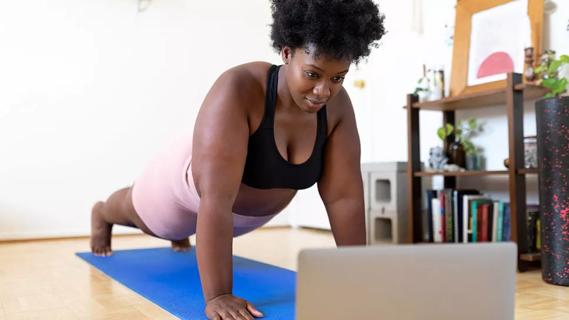
The exercise — which you’ve probably been doing since grade school — can be intimidating, but proper form can help
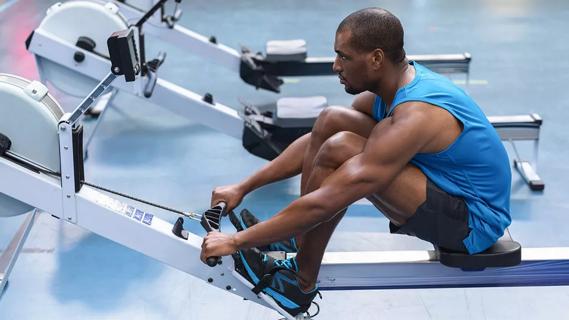
Exercise lowers risk for heart conditions, improves mental health and reduces visceral fat that can compromise your organs
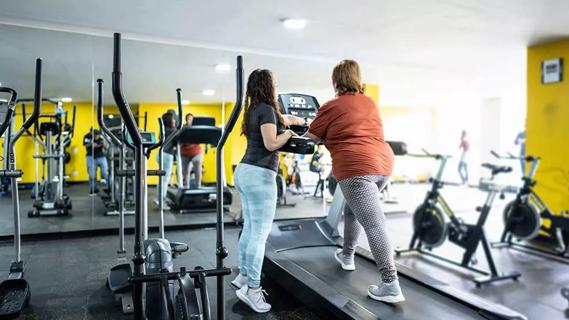
Ask questions, get referrals and consider if someone is a good fit for you and your fitness goals
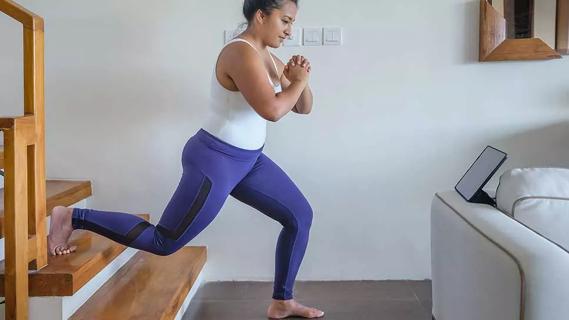
Expect a few bumps in the road, work out for the right reasons and give yourself some credit
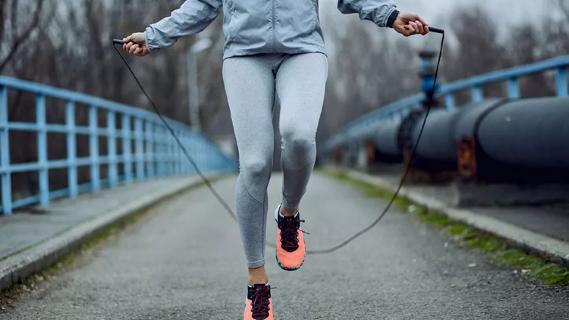
Jump into the swing of things to improve your coordination, burn calories and get your heart rate going

Walking with a weighted backpack is a low-impact, full-body workout that’s growing in popularity
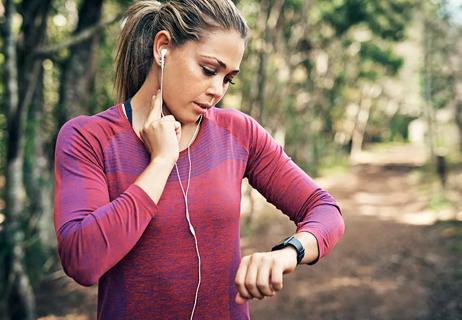
A super high heart rate means you’re burning more than fat
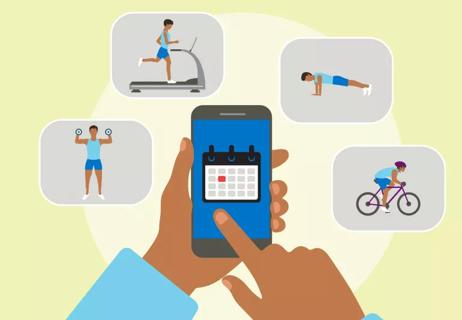
Meet your workout goals by accounting for frequency, intensity, time and type

Type 2 diabetes isn’t inevitable with these dietary changes

Applying a hot or cold compress can help with pain